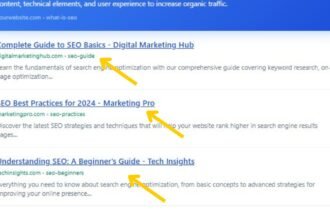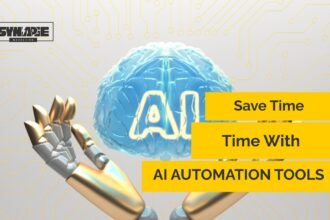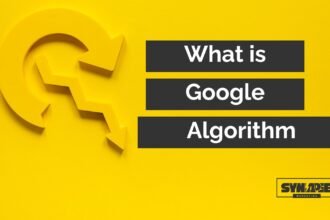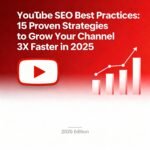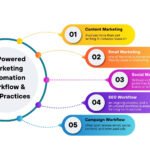Ever wondered why some websites always show up first on Google—while others are buried on page ten, never to be seen again? Whether you’re a small business owner, a digital marketer, or a curious browser, you’ve probably asked yourself: What is SEO?
Search Engine Optimization—better known as SEO—is the reason certain sites dominate your search results. It’s not luck, it’s not coincidence, and it’s definitely not paid ads (at least not in this case). SEO is a strategic digital marketing practice that helps websites earn visibility in organic search results—those golden, unpaid rankings on Google and other search engines.
In today’s crowded online world, where 93% of online experiences begin with a search engine, understanding what SEO is isn’t just useful—it’s essential. Whether someone is searching for the “best coffee near me” or “how to fix a leaky faucet,” search engines are the gateway. And SEO is your ticket to showing up when it counts.
Read More On SEO & Content Marketing
In this blog, we’ll break down exactly what SEO is, how it works, and why it matters more than ever in 2025. We’ll explore its technical backbone, its content-driven strategies, and its off-page power plays—so by the end, you won’t just understand SEO; you’ll know how to leverage it.
What is SEO? A Clear Definition
At its core, SEO—short for Search Engine Optimization—is the art and science of improving a website’s visibility in organic (non-paid) search engine results. When someone types a query into Google, Bing, or any other search engine, SEO is what determines whether your website shows up on that first page… or gets lost in the void.
So, what is SEO really about?
It’s about understanding how search engines work—and aligning your website with what those engines (and, more importantly, their users) are looking for. The ultimate aim? To attract qualified, organic traffic by showing up at the right place, at the right time, for the right search terms.
SEO isn’t a one-trick pony—it’s a layered, strategic process that touches on:
- Technical SEO – The nuts and bolts: site speed, mobile-friendliness, secure connections, proper indexing.
- On-Page SEO – Crafting high-quality, keyword-rich content and optimizing elements like meta tags, headers, and URLs.
- Off-Page SEO – Building a website’s reputation through backlinks, brand mentions, and other external signals.
- Content SEO – Developing valuable, intent-focused content that answers user questions and satisfies search intent.
When all these elements work together, your website becomes easier for search engines to crawl, understand, and rank—giving you a competitive edge in digital visibility.
And in 2025, SEO is more nuanced than ever—powered by artificial intelligence, user intent modeling, and natural language processing (NLP). It’s no longer about gaming the system. It’s about being the most useful answer on the web.
So when someone asks, “What is SEO?”, the short answer is: It’s how you make sure your digital voice gets heard. The long answer? Well, that’s what the rest of this guide is for.
How Does SEO Work? Behind the Digital Curtain

To truly understand what SEO is, you need to peek behind the digital curtain and see how search engines operate.
Search engines like Google use complex algorithms to crawl billions of web pages, index their content, and then rank them in order of relevance and quality for each user query. But they’re not just ranking pages—they’re ranking experiences. That’s where SEO steps in.
Here’s how it works:
– Crawling and Indexing
Search engines send out bots (also called spiders) to crawl your website. These bots read your pages, follow your links, and try to understand your content. If your site is easy to navigate and properly structured, it gets indexed—meaning it’s stored in the search engine’s massive database, ready to be served up in results.
– Relevance and Search Intent
When someone types in a query—say, “how to bake sourdough bread”—the search engine evaluates which indexed pages best match that search intent. This is where keywords (including NLP keywords like “easy sourdough recipe” or “bread baking tips”) come into play.
– Ranking Factors
Google uses over 200 ranking factors to determine where a page lands in the results. The key elements include:
- Keyword optimization (e.g., using “what is SEO?” in your headers and content)
- Page load speed
- Mobile usability
- Backlink quality and quantity
- Content relevance and freshness
- User experience signals (like bounce rate and time on site)
SEO helps you align with these signals—making your site not just visible, but clickable and credible.
– Organic Traffic, Not Paid Ads
Unlike Pay-Per-Click (PPC) advertising, SEO focuses on earning your spot naturally. It’s long-term and sustainable—and the traffic it brings is often more trusted by users.
So, when we ask again, “What is SEO?”, we’re talking about the process of working with the algorithm—not against it—to make sure your content surfaces when it matters most.
Core Pillars of SEO: Breaking It Down
Now that we’ve answered the foundational question—what is SEO?—it’s time to unpack how it actually functions across its four core pillars. Think of these as the legs of a sturdy SEO table: if one’s weak or missing, the whole strategy wobbles.
Each pillar plays a specific role in helping your website perform better in organic search results.
Technical SEO: The Foundation of Visibility
This is the backend stuff—the infrastructure that makes your site accessible, crawlable, and indexable.
Without solid technical SEO, even the best content in the world won’t rank.
Key elements include:
- Site speed: Pages that load in under 3 seconds outperform slower ones.
- Mobile-friendliness: Over 60% of searches come from mobile devices.
- HTTPS security: Secure websites build user trust (and Google preference).
- XML sitemaps and robots.txt files: Help search engines crawl and index efficiently.
- Core Web Vitals: Google’s benchmark for user experience metrics like interactivity and visual stability.
LSI keywords in this section: website optimization, site structure, crawlability, indexation, mobile usability.
On-Page SEO: Optimizing What Users See
This is where content meets structure. On-page SEO is all about making your individual pages clear, relevant, and keyword-rich—so both users and search engines can instantly grasp their value.
Key elements include:
- Keyword usage: Smart, natural inclusion of target phrases like “what is SEO?”
- Title tags and meta descriptions: These influence both rankings and click-throughs.
- Header tags (H1–H3): Break up content and highlight hierarchy.
- URL structure: Clean, descriptive URLs improve navigation and trust.
- Schema markup: Helps search engines “read” your content for rich snippets.
LSI & NLP keywords here: meta description, on-page optimization, search engine rankings, user intent.
Off-Page SEO: Building Authority Beyond Your Site
If on-page SEO is how your website presents itself, off-page SEO is how the internet talks about you.
It’s all about earning trust, relevance, and authority through external signals.
Key tactics include:
- Backlinks from reputable websites (the backbone of off-page SEO)
- Mentions and citations on forums, blogs, and directories
- Social media sharing and engagement
- Guest blogging and PR outreach
Off-page SEO helps Google determine how credible and influential your site is—especially when others link to it naturally.
LSI & NLP keywords featured: link building, SEO for small business, domain authority, brand mentions.
Content SEO: The Heart of the Strategy
No matter how fast your site is or how many backlinks you’ve got, content is still king. But in 2025, content SEO isn’t just about writing a lot—it’s about writing with purpose.
That means:
- Answering user questions clearly and thoroughly
- Aligning with search intent and NLP queries
- Using headings, bullets, visuals, and multimedia to enhance readability
- Regularly updating content to stay relevant
Content SEO is your chance to showcase expertise and deliver value. It’s also where your keyword strategy comes to life—through well-researched, well-written material that actually solves problems.
NLP and LSI keywords that belong here: SEO content strategy, organic traffic, best SEO strategies in 2025, evergreen content.
With all four pillars aligned, your SEO game goes from invisible to unmissable. And remember: no pillar works in isolation. It’s the synergy between technical precision, on-page clarity, off-page trust, and content value that truly answers the question: what is SEO, and why does it matter?
The Role of Keywords: Primary, LSI, and NLP
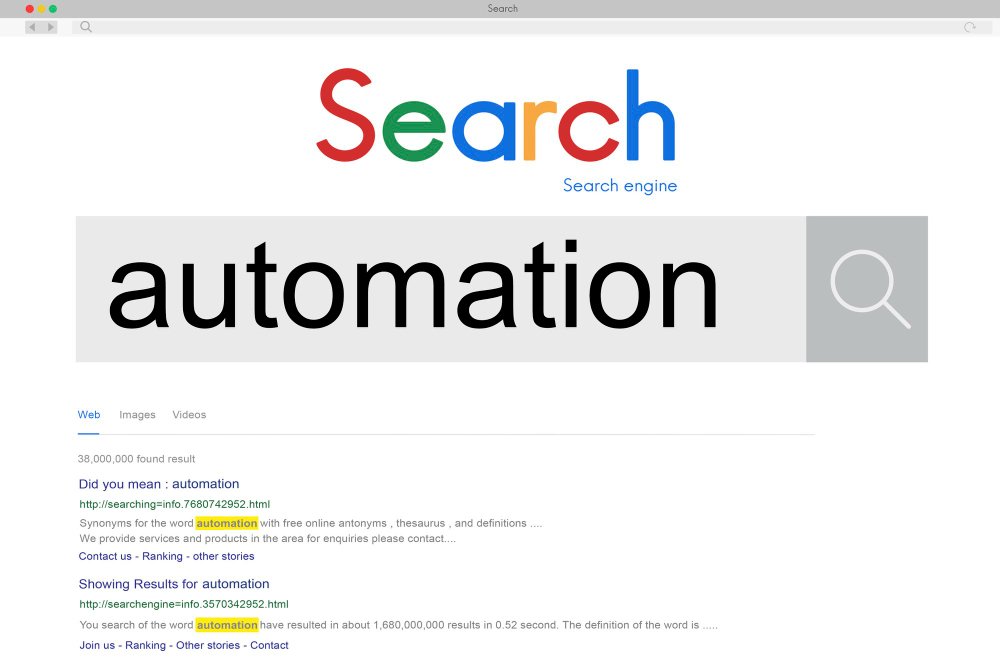
If SEO were a language, keywords would be its vocabulary. They’re the terms people type, speak, or tap into search engines—and they’re crucial in helping those engines connect user questions with your content.
Read More On SEO & Content Marketing
So when we ask, what is SEO?, a huge part of the answer lies in understanding how to research, use, and optimize keywords effectively. But it’s not just about repeating a term like “SEO” a dozen times on a page—that’s old-school, and frankly, ineffective. Today’s keyword strategy is deeper, more intelligent, and more nuanced.
Primary Keywords: The Core Target
These are the main search terms you want your content to rank for. In this blog, the primary keyword is “what is SEO?”, and you’ve probably noticed it appearing consistently—but naturally—throughout.
Your goal with primary keywords is to:
- Include them in titles, meta descriptions, headers, and early body content
- Use them at a 3% density throughout the page
- Avoid unnatural repetition or keyword stuffing
Why? Because search engines have evolved. It’s not about gaming the system—it’s about creating content that actually answers the user’s question.
LSI Keywords: The Semantic Support Crew
LSI (Latent Semantic Indexing) keywords are contextually related terms that help search engines understand the topic depth of your content.
For example, if your primary keyword is “what is SEO?”, strong LSI keywords might include:
- organic traffic
- search engine rankings
- keyword research
- on-page optimization
- meta description
- SEO content
These aren’t synonyms—they’re semantic cousins. They provide clarity, show subject expertise, and help your page rank for a broader set of related searches.
Tip: Use LSI keywords in subheadings, bullet lists, alt text, and image captions to enrich your content naturally.
NLP Keywords: The Future of Search
As voice search and AI-powered algorithms take center stage, NLP (Natural Language Processing) keywords have become SEO gold.
NLP keywords reflect how real people speak and ask questions—especially with tools like Siri, Google Assistant, and ChatGPT guiding searches. They’re conversational, question-based, and focused on user intent.
Examples relevant to this blog include:
- how does SEO work?
- what is SEO in digital marketing?
- SEO tips for beginners
- best SEO practices in 2025
- how to improve SEO for a small business
When you sprinkle these naturally into your content, you align with how people are actually searching—which means better click-throughs, better engagement, and better rankings.
Why Keyword Strategy Matters
Great SEO content doesn’t just repeat “what is SEO?” for the sake of it. It blends primary, LSI, and NLP keywords into a coherent narrative that answers user intent, adds value, and meets algorithmic expectations.
It’s about becoming the best possible answer to the question someone’s asking.
And that’s the real magic of keywords in SEO—not just boosting visibility, but building relevance and trust where it matters most: in the minds (and search bars) of your audience.
How SEO Works: Behind the Google Curtain
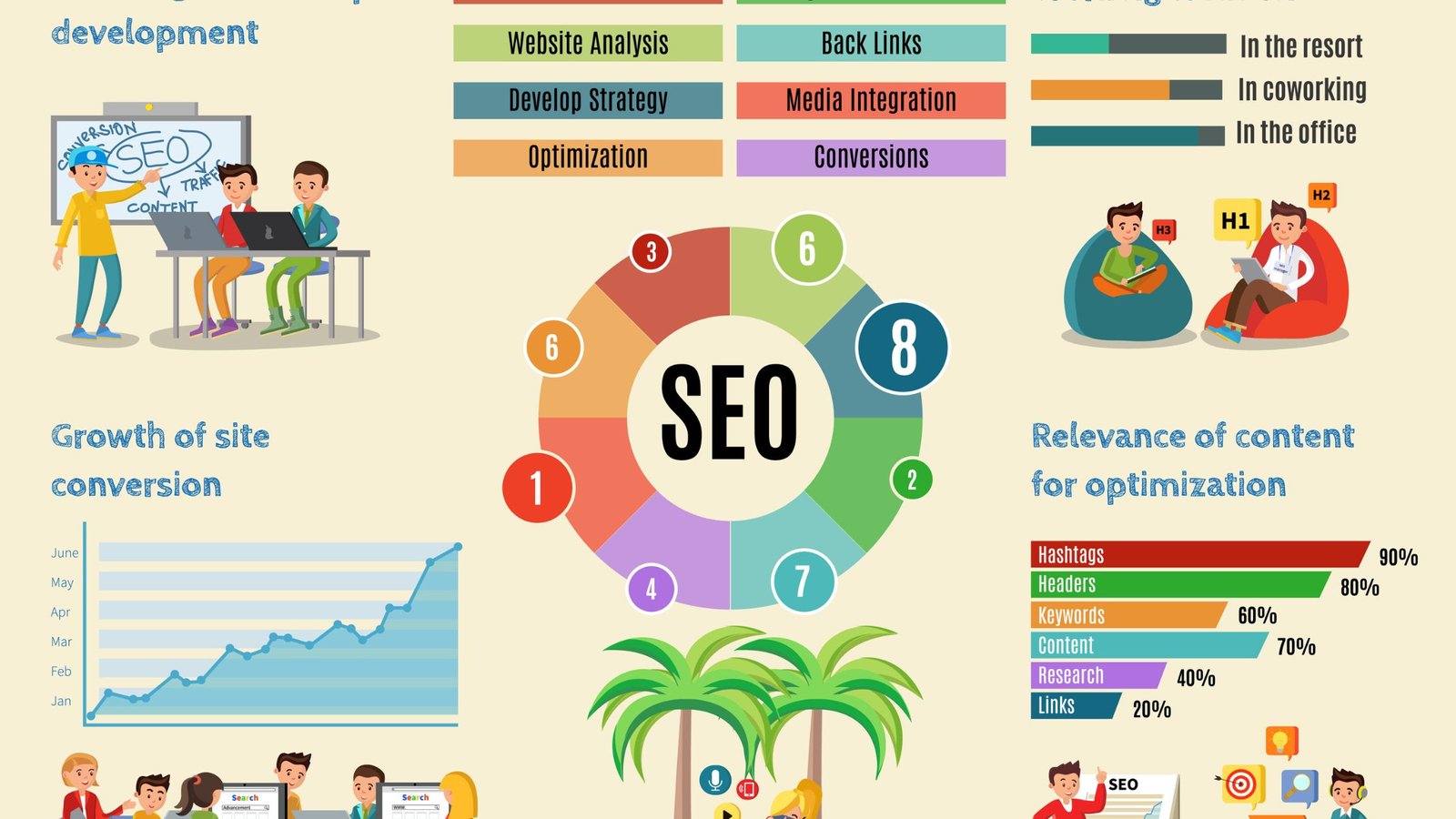
To fully answer the question “What is SEO?”, we need to understand how the major players—like Google, Bing, and Yahoo—actually function. SEO doesn’t exist in a vacuum; it’s a response to how search engines crawl, interpret, and rank content.
Let’s demystify that process.
Step 1: Crawling – Finding Your Pages
Before your site can rank, search engines have to find it. They do this through bots (aka crawlers or spiders) that travel across the web, scanning and collecting information from websites.
If your site structure is messy, your pages load slowly, or your internal links are broken, crawlers may miss important pages—or skip your site altogether.
SEO Tip: Submit an XML sitemap and ensure robots.txt files are clean. This is part of technical SEO, and it ensures your content gets seen.
Step 2: Indexing – Storing What They Find
Once crawled, pages are added to the search engine’s index—its massive digital library.
But here’s the twist: not everything gets indexed.
Pages with duplicate content, broken structure, or poor user experience may get overlooked. SEO helps you optimize your pages for index inclusion, increasing the chances of being served up in results.
LSI/NLP keywords applied here: indexation, site performance, crawlability, “how does SEO work?”
Step 3: Ranking – Showing Up at the Top
This is the moment of truth. When a user types a query—like “what is SEO?”—the search engine’s algorithm scans its indexed content and ranks pages based on:
- Relevance: Does your content match the search intent?
- Authority: Are reputable sites linking to you (aka backlinks)?
- User Experience: Is your site fast, mobile-friendly, and secure?
- Freshness: Is your content up to date?
- Engagement Signals: How long do users stay? Do they click through?
SEO ensures you send the right signals on all fronts. It’s about showing Google and other search engines that your content is trustworthy, useful, and optimized to serve the user’s needs.
NLP keyword triggers: what is SEO, SEO tips for beginners, best SEO practices 2025.
Avoiding the SEO Pitfalls
Yes, SEO can get you to the top—but the wrong tactics can knock you down.
Beware of:
- Keyword stuffing
- Buying low-quality backlinks
- Cloaking or deceptive redirects
- Thin, irrelevant, or duplicate content
These are known as black-hat SEO techniques, and search engines penalize them harshly. In contrast, white-hat SEO focuses on ethical, long-term strategies that prioritize user experience.
So, How Does SEO Work? It’s a System.
A well-optimized site:
- Attracts crawlers with solid technical structure
- Gets indexed thanks to clean, relevant content
- Ranks higher by demonstrating authority, intent alignment, and quality
SEO is the strategy that aligns your content with search engine logic—so when someone types in a question, your answer rises to the top.
And that’s why, when you ask “What is SEO?”, the real answer is: It’s your gateway to being seen in the digital world.
SEO Trends and Best Practices for 2025
Search engines aren’t static—they evolve constantly. And so must your SEO strategy.
Understanding what SEO is today means staying in sync with where it’s headed. In 2025, we’re entering an era where algorithms are smarter, users are savvier, and the competition is fiercer than ever. Here’s what’s shaping the SEO landscape now—and how to keep your strategy future-proof.
AI and Conversational Search: The Rise of Smart Queries
Thanks to tools like ChatGPT, Google’s Gemini, and Siri, search queries are more conversational and nuanced. People are no longer typing robotic strings like “SEO tips”—they’re asking full questions like “what are the best SEO practices in 2025?”
What this means for you:
- Focus on long-tail, NLP-style keywords
- Optimize for voice search by answering questions clearly and concisely
- Structure content with FAQ sections, bullet points, and natural language
NLP terms in play: how to improve SEO, best SEO strategies in 2025, SEO tips for beginners.
Content Quality > Quantity
Google’s focus is clear: useful, human-centered content wins. It’s not about cranking out a hundred shallow blog posts—it’s about crafting deep, original content that addresses user intent.
Best practices include:
- Prioritizing topical authority over keyword density
- Using multimedia (videos, graphics, podcasts) to enrich pages
- Refreshing older posts to keep them relevant
LSI Keywords to include here: SEO content, search engine rankings, SEO tools, content freshness.
Brand Authority as a Ranking Factor
Trust matters. Google increasingly favors recognizable brands and creators with proven expertise. This means your digital reputation—across the web—impacts your rankings.
To build brand authority:
- Earn high-quality backlinks
- Invest in thought leadership content
- Get cited, shared, and mentioned across platforms
LSI keywords this supports: link building, brand mentions, domain authority.
Mobile-First & User Experience-Centric Design
Google has been using mobile-first indexing for a while, but in 2025, user experience is now non-negotiable. Pages that frustrate users—slow load times, pop-up overload, poor formatting—won’t make the cut.
Focus areas include:
- Core Web Vitals (speed, responsiveness, visual stability)
- Responsive design for all screen sizes
- Streamlined navigation and accessibility
LSI tie-ins: site speed, mobile usability, website optimization.
Multimedia & Interactive Content: Boosting Engagement
Static pages are fading. Search engines favor interactive, engaging content that keeps users on-site longer and encourages interaction.
Ideas include:
- Embedding videos that explain your topic (e.g., “What is SEO?” walkthroughs)
- Using infographics for data-driven posts
- Incorporating quizzes, calculators, or sliders for added value
Bonus: These assets often earn backlinks and shares, boosting off-page SEO naturally.
Local SEO Still Matters—A Lot
Even as AI dominates global search, local intent continues to explode. For small businesses, optimizing for “near me” and city-specific terms can drive highly targeted traffic.
Tactics include:
- Optimizing your Google Business Profile
- Using location-based keywords
- Gathering consistent local citations and reviews
NLP examples: SEO for small business, best SEO for local search.
2025 SEO Checklist
- Use natural, conversational language
- Refresh old content and keep it evergreen
- Monitor Core Web Vitals
- Build backlinks with value, not volume
- Think “user-first” in everything—layout, tone, structure, speed
So, what is SEO in 2025? It’s intelligent, human-focused, and ever-evolving.
Recommended Resources to Master SEO
So, we’ve answered the big question—what is SEO?—and explored its pillars, workings, and emerging trends. But SEO isn’t a one-and-done deal. It’s a continuous learning process in a fast-moving ecosystem.
Whether you’re a total beginner or a seasoned strategist, the right resources can sharpen your skills, deepen your insights, and keep your content ranking strong in 2025 and beyond.
Here’s a curated list of trusted tools, blogs, and learning hubs to keep your SEO game sharp:
Beginner-Friendly Starters
- Mailchimp’s SEO Glossary: A digestible intro to all the essential terms—from backlinks to metadata. Ideal for beginners.
- Google’s SEO Starter Guide: Straight from the source. Learn how Google sees and ranks your site.
Primary Keyword reinforced: What is SEO?
Keyword Mastery & Semantic Strategy
- MarketingProfs on LSI Keywords: Learn how to use semantic keywords to give your content depth.
- Inacom’s Guide to NLP Keywords: Understand how search engines interpret natural language queries.
- Fit Design: LSI in Practice: Practical breakdowns of how to enrich your keyword strategy.
Reinforces LSI & NLP keyword use: keyword research, user intent, natural language processing, content optimization.
Technical & Strategic SEO
- Neil Patel’s Free SEO Hub: Tools, guides, and checklists from one of the web’s most trusted voices.
- Search Engine Land’s SEO Guide: Up-to-date analysis, news, and best practices across all areas of SEO.
LSI keywords enriched: SEO tools, SEO strategies, website optimization.
Staying Ahead of the Curve
- Torro.io: SEO Predictions for 2025: Get ahead of the trends—from AI search to content authenticity.
- LearningSEO.io: A complete roadmap for learning SEO, from beginner to expert.
- Search Engine Journal & Moz Blog: These sites stay current with algorithm changes, case studies, and advanced techniques.
NLP keyword examples here: best SEO practices in 2025, SEO content strategy, SEO tips for beginners.
Bonus: YouTube & Visual Learning
- Google Search Central YouTube Channel: Visual explanations of SEO principles from the world’s #1 search engine.
- Whiteboard Friday by Moz: Short, punchy breakdowns of advanced SEO topics in under 10 minutes.
SEO Is a Long Game—But a Game Worth Playing
At its heart, SEO is about serving your audience first. When you consistently create valuable content, optimize for real user needs, and respect the evolving search ecosystem, rankings follow.
So the next time someone asks “What is SEO?”, don’t just point to a definition—point them toward strategy, structure, and sustainable growth.
And now? You’re equipped to lead the way.
Frequently Asked Questions on What Is SEO and How Does It Work?
What is SEO in simple terms?
SEO (Search Engine Optimization) is the process of improving your website so it ranks higher in search engine results. The better your SEO, the more visible your site becomes to people searching for information, products, or services related to your content.
How does SEO work?
SEO works by optimizing your site’s technical structure, content, and reputation. Search engines like Google use bots to crawl your website, evaluate its relevance and quality, and then rank it in search results based on hundreds of factors like keywords, backlinks, and user experience.
Why is SEO important for my website?
SEO helps your website attract organic traffic, build credibility, and reach the right audience without paying for ads. Without SEO, even the best websites risk getting buried in search results where no one sees them.
How long does SEO take to show results?
SEO is a long-term strategy. Depending on your niche, competition, and effort, it can take anywhere from 3 to 6 months to see noticeable improvements in rankings and traffic. But the results are sustainable and often grow over time.
What are keywords in SEO?
Keywords are the terms people type or speak into search engines. SEO uses:
- Primary keywords like “what is SEO?” to target main topics.
- LSI keywords like “organic traffic” or “search engine rankings” to provide context.
- NLP keywords like “how does SEO work” or “SEO tips for beginners” to match natural, conversational searches.
What are the main types of SEO?
- Technical SEO: Optimizes site speed, mobile usability, and crawlability.
- On-page SEO: Focuses on content, meta tags, and keywords.
- Off-page SEO: Builds backlinks and authority from other sites.
- Content SEO: Crafts valuable, search-intent-aligned content.
Is SEO different for local businesses?
Yes. Local SEO targets location-based queries like “best pizza near me” or “SEO services in London.” It involves optimizing Google Business Profiles, using geo-specific keywords, and earning local citations and reviews.
Are there SEO practices to avoid?
Definitely. Avoid black-hat SEO tactics like keyword stuffing, buying backlinks, or duplicating content. These can lead to search engine penalties and hurt your visibility long-term.
What are backlinks, and why do they matter?
Backlinks are links from other websites to yours. They signal trust and authority to search engines. The more high-quality, relevant backlinks you have, the better your site can rank—especially for competitive keywords like “what is SEO?”
Where can I learn more about SEO?
Check out these top resources:



